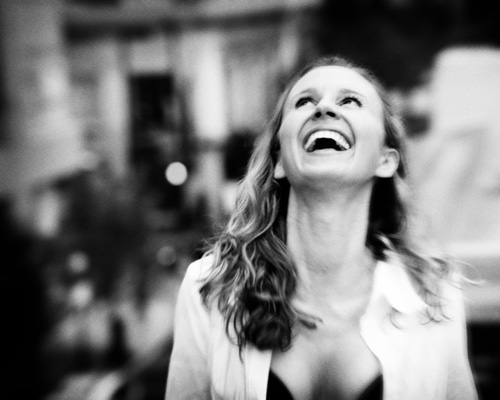It’s Guest Blog Wednesday featuring Catherine Hall!

Rim Light, A Page from Avedon’s Book
Richard Avedon has captured my imagination ever since my dad bought me my first camera. At 16 years old, I wasn’t savvy enough to know how he created such compelling and visually stunning portraits – all I knew was I couldn’t stop looking at his images and felt an immediate, spellbinding connection with his subjects. Over the years, I’ve studied and learned a lot about his technical style, and one of the most important is rim lighting – a skill all portrait photographers should incorporate into their arsenal of tricks.
Sometimes called “back light” or “hair light,” rim light creates a silhouette of light around the side or top of a subject, without illuminating the background. This light allows the viewer to visually separate a subject from the background. A subtle sheen around the silhouette of a subject can be achieved by placing an artificial lighting source behind a subject or by placing the subject in front of the setting sun. A master at rim light, Avedon uses lighting techniques that give his human characters an exceptional and differential depth.
Taking a page from Avedon’s book, I consider lighting one of my most important technical investments. I have been consistently amazed by people’s positive reactions to lighting in my portraits. I believe our eyes and minds are wired to look for depth in every photograph – and lighting can completely change your perception of the entire composition of the image and the depth of the characters.
I’m fondest of Avedon’s early years, when he often used soft, blurry rim effects in his famous fashion portraiture. Artists have a tendency to mimic their heroes and I, too, often steer toward less extreme, softer set-ups. In the following photograph, I used the after hours, early evening sun as rim – using a 4×6” zebra California Sunbounce as the key light and natural ambient light as the fill. Notice that the rim light helps the viewer focus on the human subjects before identifying with the surrounding environment. The result is a soft, romantic portrait of a couple doused in a sheen of natural light in a vineyard – and it’s just so beautiful.
I’ve learned the hard way, however, that I should step out of the box and try something other than what I’m naturally inclined to do. My lighting director is extremely passionate about lighting (duh) and has taught me to be more adventurous with different kinds of lighting. Thanks to him, I’ve experimented with artificial light to create stronger rim light in some of my shots – which instantly creates a completely different emotional effect. In the following photograph, I used a hard rim light set at about 1 f/stop higher than the key light softbox. The rim light was actually tucked into an alcove behind the bar. This prevents lens flare while creating a golden glow on the silhouette of the model’s hair.
There is no hard and fast rule about how you should use rim light. You should have a vision and design your shot using your available tools and techniques. This might mean adjusting the placement of the rim light, having more rim light, or using natural ambient light (instead of an additional fill light) to complement the rim effect. I meter all my shots; this makes it easier for us to compose the shot again – or know how much we have to modify.
The most important thing is to define your style as a photographer and let your style define what tools and techniques you use in each shoot. For Avedon, it was always more about the emotional darkness and lightness of his human subjects and less about the technical setup. Create a lighting style that best represents your own artistic sense, but don’t be afraid to change it up. You’ll be surprised at some of the shots you will get.
You can see more of Catherine’s work at CatherineHall.net, keep up with her on her blog, see her on TWiT Photo, follow her on Twitter, and find her on Facebook.